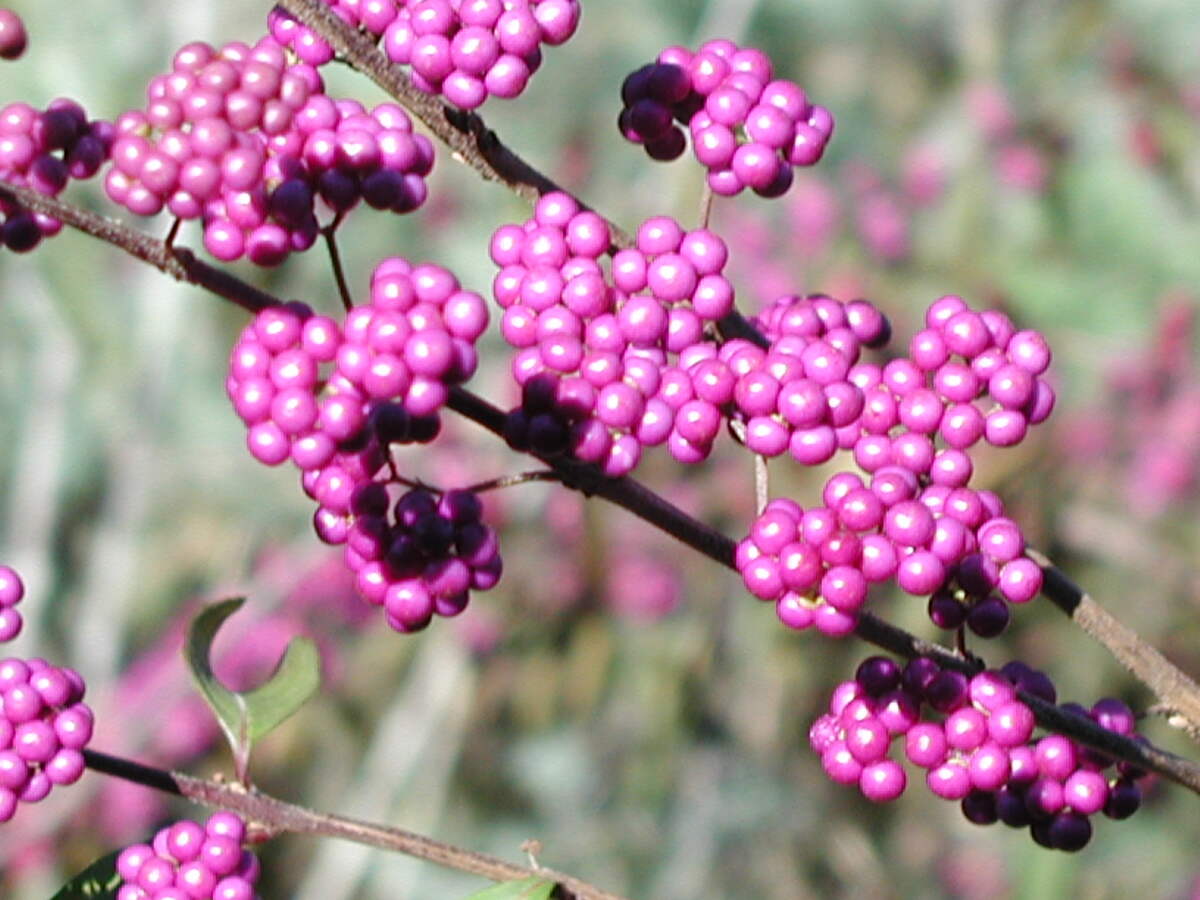
Incorporating native plants into your Charleston, South Carolina, yard will enhance the natural beauty of your property, add visual appeal, and require less maintenance and upkeep.
But which ones are best for your garden?
Here are 10 native plants that are perfect for landscaping in Charleston:
Native Trees
From the tall pines that line our shores to the enormous oaks providing shade, trees have been a vital part of this region since its first settlers. They are found almost everywhere in South Carolina. Because they prevent soil from eroding, offer a habitat for wildlife, and reduce air pollution, trees are essential natural resources.
1. Southern Magnolia (Magnolia grandiflora)
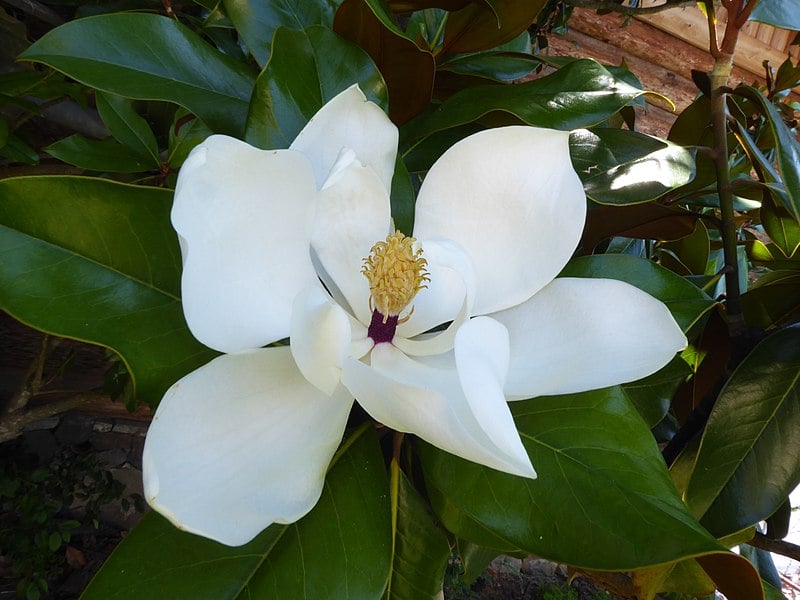
The Southern Magnolia is a classic evergreen tree of the South. Its large, glossy leaves and fragrant white flowers make it a perfect centerpiece for a large landscape. It can grow to 80 feet tall with a spread of up to 50 feet, so plan accordingly. Additionally, the tree produces cones that you can use for holiday decorations.
If you’re lucky enough to have a Southern Magnolia on your property, take good care of it. The tree requires regular pruning to maintain its shape and size and needs to be watered during dry spells. With the proper care, the Southern Magnolia will continue to be a beautiful flowering tree for your Charleston landscape for years to come.
Plant type: Tree
USDA Hardiness Zone: 7 to 9
Sun: Partial shade or full sun
Soil: Well-drained, loamy, moist, rich soils
Duration: Perennial
Fragrance: When in bloom, the creamy-white blossoms emit a wonderful fragrance into the air and are great for sensory gardens.
Bloom time: April to June or late spring
Water needs: To establish the root ball, apply two gallons of water per inch of trunk diameter per day for two weeks, then every other day for two months, and finally once a week.
Mature height: 60-80 feet high
Notes: Relatively pest and disease-resistant tree, but occasionally scales and algal leaf spot are possible. Moderately deer-resistant.
Maintenance: Southern magnolias require a lot of room and are best suited to large landscapes. Apply 3 inches of mulch without touching the trunk after planting. Keep the soil moist and dead branches trimmed. Avoid pruning lower limbs and leaves as it may result in stress-induced issues or disease.
2. Red Maple (Acer rubrum)
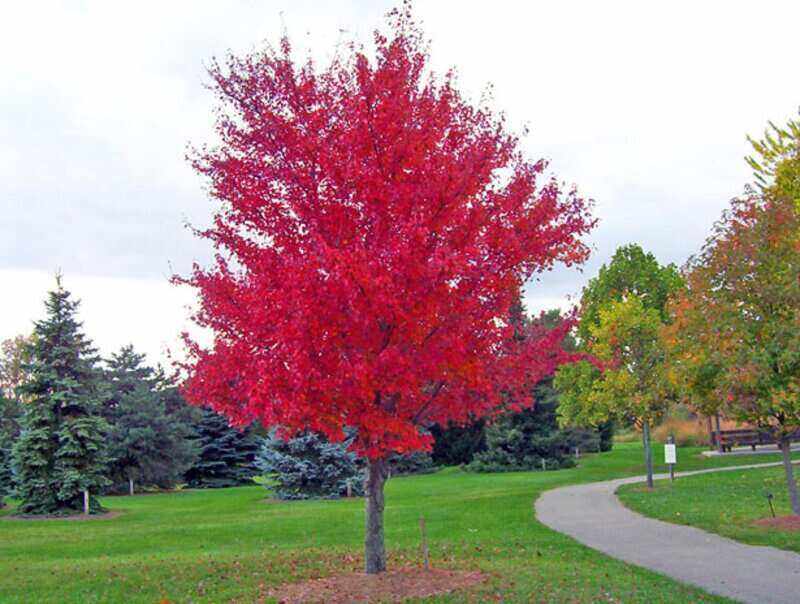
Photo Credit: David Wagner / PublicDomainPictures / CC0 1.0
Native to eastern North America, red maple trees are large, deciduous trees. Red maples grow well in all soil types but prefer acidic, moist conditions, making them an excellent fit for Charleston. The tree produces brilliant fall foliage, ranging from a vibrant red to a yellow or greenish-yellow.
Red maples are incredibly versatile as fast-growing shade trees, from urban streets to residential landscapes. Keep in mind they can grow up to 60 feet. They are also an important tree species for wildlife, providing food and habitat for various South Carolina birds and mammals.
Plant type: Tree
USDA Hardiness Zone: 3 to 9
Sun: Full sun to partial shade
Soil: Well-drained, acidic, loamy soils
Duration: Perennial
Fragrance: None
Season of Interest: Spring
Water needs: Regular watering, particularly during extended periods of drought
Mature height: 40 to 60 feet
Notes: Some susceptibility to common maple tree diseases, mainly if grown in wet conditions.
Maintenance: Regular pruning to maintain size and shape. The tree requires regular watering, particularly during periods of drought.
Pro Tip: If you’d prefer a small tree or don’t have the space for a large shade tree, check out Eastern redbuds with their pink/red flowers.
Native Ferns
Ferns give a shaded environment a delicate, airy look. Whereas other plants cannot survive in complete shadow, many ferns can. Native ferns provide a landscape design with a distinctive texture and are an ideal choice for low spots on a property or drainage areas and can look stunning when planted in large quantities.
3. Southern Lady Fern (Athyrium asplenioides)

Southern lady ferns are a popular landscaping choice in Charleston because of their delicate and graceful appearance. With lacy fronds and a feathery texture, this deciduous fern adds a touch of elegance to any yard or rain garden.
Gardeners frequently choose the Southern lady fern because it is low maintenance and needs minimal fertilizing or pruning. A reliable option for those wishing to add some greenery to their outdoor living spaces.
Plant type: Fern
USDA Hardiness Zone: 5 to 9
Sun: Prefers shade or partial shade
Soil: Clay, loamy, or sandy soil
Duration: Perennial
Fragrance: None
Season of Interest: Late spring to early fall
Water needs: Medium, prefers moist soil
Mature height: 2 to 3 feet
Notes: By mid-summer, fronds usually start to look a little ragged, but there are otherwise no significant pest or disease issues.
Maintenance: To prevent fronds from breaking, provide shelter from the wind. Divide clumps in the spring every few years to reposition crowns near the soil line.
4. Cinnamon Fern (Osmundastrum cinnamomeum)

Cinnamon fern is a great choice for adding a touch of greenery to your garden. Its beautiful, fertile fronds add an interesting texture to any landscape. It is a low-maintenance plant that is easy to grow and care for. In fall, the leaves turn a golden yellow to copper shade that will add color to your autumn landscape.
This upright, deciduous fern is native to South Carolina and often grows to a height of 2 to 4 feet. It prefers full sun to part shade, but if planted in the sun, it requires constant moisture. Cinnamon ferns can tolerate some drought when planted in shade gardens.
Plant type: Fern
USDA Hardiness Zone: 3 to 9
Sun: Full shade to full sun
Soil: Well-draining, moist soil
Duration: Perennial
Fragrance: None
Season of interest: Spring, summer, and fall
Water needs: Although it can endure some drought, it prefers regular watering. Avoid water-logged areas.
Mature height: 2 to 4 feet (up to 6 feet in some cases)
Notes: Non-toxic. They can sunburn if they get too much light.
Maintenance: Low-maintenance. Cut back old fronds in spring before new growth appears.
Native Vines
Fast-growing vines, when grown on a trellis, can provide shade and are perfect for compact gardens because they require less area to mature than other plant species. Vine can help reduce noise and air pollution while also creating privacy. Flowering vines attract pollinators such as hummingbirds, butterflies, and bees.
5. Yellow Jessamine (Gelsemium sempervirens)

A native of the southeastern United States, yellow jessamine, also known as Carolina jessamine, is a hardy vine. From the coastal plains to the Piedmont and Blue Ridge region, the state flower is famous for its bright yellow flowers that bloom in late winter and early spring. The fragrant flowers attract pollinators such as bees and butterflies.
This evergreen thrives in full sun to partial shade and prefers well-drained soil. It is a low-maintenance plant that only requires a little watering once established. It can grow up to 20 feet long, making it an excellent choice for trellises or arbors.
Note: All parts of this plant are poisonous if ingested, and the sap can irritate sensitive skin, so it’s not recommended for homes with pets or small children. Contact Poison Control if you suspect poisoning.
Plant type: Vine
USDA Hardiness Zone: 7 to 10
Sun: Full sun to partial shade
Soil: Well-drained
Duration: Perennial
Fragrance: Fragrant
Bloom time: Late winter to early spring
Water needs: Low
Mature height: Up to 20 feet
Notes: All parts of the plant are poisonous if ingested.
Maintenance: Low maintenance; pruning is not necessary but can be done to control the size of the vine.
6. Virginia Creeper (Parthenocissus quinquefolia)
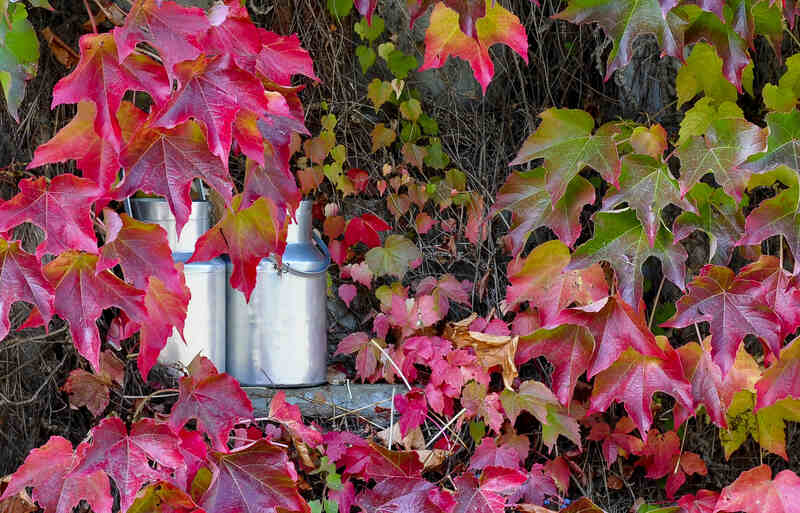
Virginia creeper is a woody deciduous vine reaching up to 40 feet tall and producing luxurious green foliage. It is similar in appearance to poison ivy but produces vibrant berries and has five leaves instead of three. These berries are not edible but attract native birds from around South Carolina.
When planting a Virginia creeper, supporting the vine with something to climb on, such as a trellis or fence, is crucial.
Note: This plant can be invasive if not properly maintained, so regular pruning is recommended.
Plant type: Vine
USDA Hardiness Zone: 3 to 9
Sun: Partial shade to full sun
Soil: Well-drained, moist, loamy soils
Duration: Perennial
Fragrance: None
Season of Interest: Late spring to early summer, turning purple or red in the fall
Water needs: Medium, prefers moist soil
Mature height: Up to 40 feet
Notes: High toxicity. The fruit is extremely poisonous or fatal to people if eaten.
Maintenance: Regular pruning to maintain size and shape. Provide support for the climbing vine with a trellis or fence.
Native Shrubs
Native shrubs can define outdoor living spaces because of their wide range of colors, flowers, and scents. You can create a beautiful backyard that is good for the ecosystem by including native South Carolina shrubs in your landscape design.
7. Inkberry Holly (Ilex glabra)
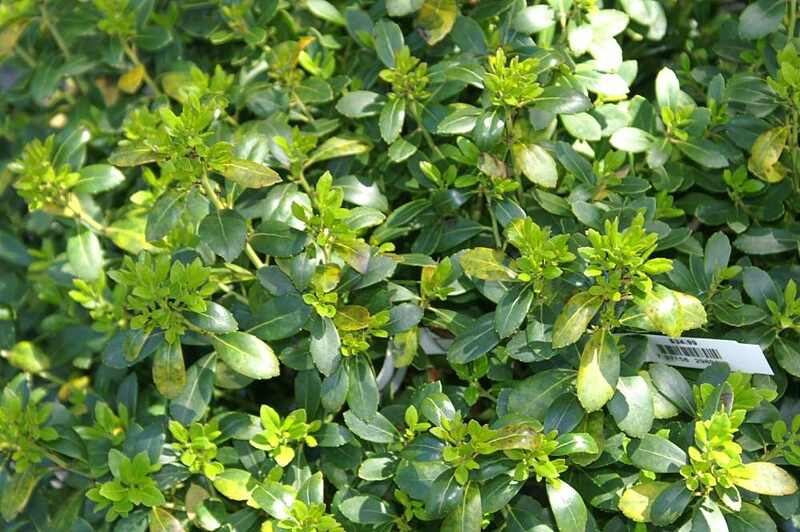
Inkberry holly is an evergreen shrub native to the eastern United States that sports glossy, dark green, oval-shaped leaves. In May and June, inkberry bears greenish-white flowers, followed by pea-sized black fruits in early October, which attract various birds and wildlife.
Inkberry thrives in full sun to partial shade and prefers moist, well-drained soil. It is a low-maintenance plant that requires only a little watering once established. Moderately salt-tolerant, it can grow up to 10 feet tall and 8 feet wide, making it an excellent choice for privacy hedges.
Plant type: Shrub
USDA Hardiness Zone: 4 to 11
Sun: Full sun to partial shade
Soil: Prefers moist, well-drained soil
Duration: Perennial
Fragrance: Fragrant
Bloom time: Late spring to early summer
Water needs: Low to moderate
Mature height: Up to 10 feet
Notes: Due to its high flammability rating, this plant shouldn’t be grown close to buildings.
Maintenance: Low maintenance, pruning is not necessary but can be done to shape the shrub into a hedge, for example. Remove suckers unless you want them to spread.
8. American Beautyberry (Callicarpa Americana)
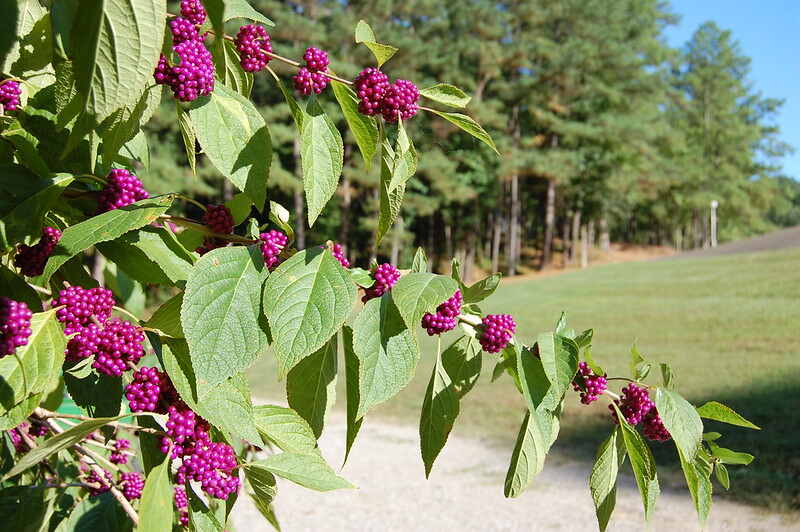
The American beautyberry is a great addition to any Charleston landscape, providing both aesthetic appeal and ecological benefits. This deciduous shrub produces abundant berries, a valuable food source that attracts birds during winter.
American beautyberry blooms in spring to early fall, producing small pink or lavender flowers and developing clusters of bright purple or white berries that last into winter. A hardy shrub, it is drought-tolerant and thrives in a variety of growing conditions.
Have a pooch on the premises? American beautyberry is an excellent alternative to plants poisonous to dogs, making it an ideal choice for many homeowners.
Plant type: Shrub
USDA Hardiness Zone: 6 to 10
Sun: Full sun to partial shade
Soil: Well-drained, organic-rich soil
Duration: Perennial
Fragrance: Leaves have a minty fragrance when crushed.
Bloom time: Spring to early fall with purple or white berries into winter.
Water needs: Moderate to high. It is fairly drought-tolerant once established.
Mature height: 6 feet
Notes: Not considered toxic, but the berries can cause gastrointestinal upset if ingested in large quantities. Considered a pet-safe plant.
Maintenance: Relatively low-maintenance but may benefit from occasional pruning to maintain shape and encourage new growth.
Native Grasses
Native grasses are beautiful, low-maintenance, and wildlife-friendly plants that can enhance any landscape. Even though their beauty tends to be more subtle than perennials and annuals, they provide depth and intrigue to Charleston’s color palette.
9. Muhly Grass (Muhlenbergia capillaries)
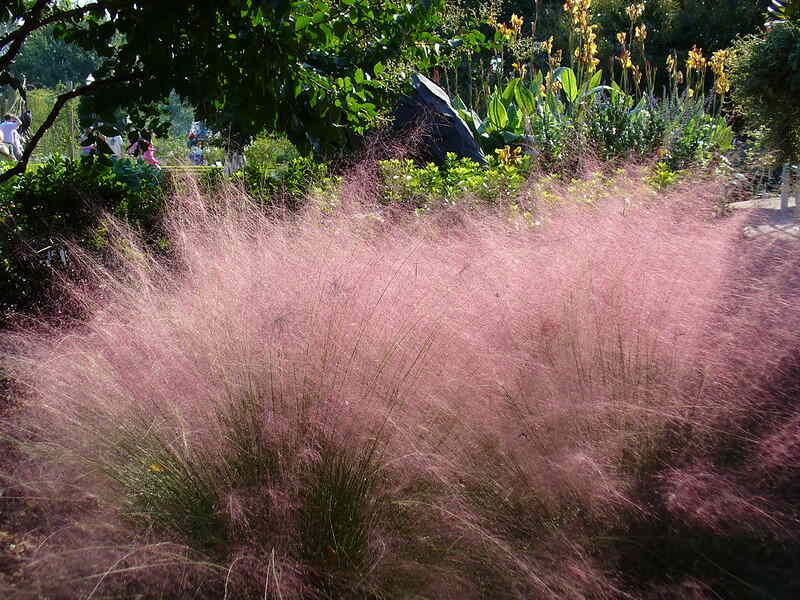
This grass is a popular ornamental grass known for its showy display of pinkish-purple flowers that bloom in the fall. Muhly grass provides a beautiful aesthetic to any landscape it inhabits and is very easy to maintain, making it a popular choice for many homeowners, regardless of their growing skills.
Pink muhly grass is resilient despite its delicate appearance and can withstand various weather conditions, including droughts and extreme temperatures. A beloved staple of the Lowcountry, it is often used as a centerpiece to add color and texture or as part of your garden edging.
Plant Type: Ornamental grass
USDA Hardiness Zone: 6 to 10
Sun: Full sun
Soil Type: Well-drained soils, but can tolerate a range of soil types. High salt tolerance.
Duration: Perennial
Fragrance: None
Bloom Time: Late summer to fall
Water: Moderate water needs
Mature height: 2-3 feet
Notes: Non-toxic
Maintenance: Low maintenance, prune in early spring to encourage new growth.
10. Switchgrass (Panicum virgatum)
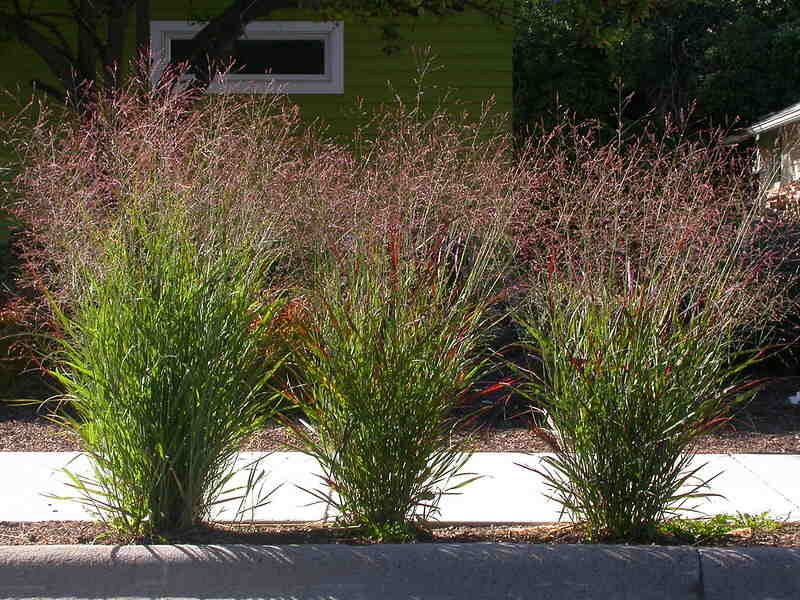
Switchgrass is a beautiful native grass that comes in many varieties with showy flowers, excellent fall color, and winter interest. This grass prefers full sun and moist to wet soil but is highly adaptable to various conditions.
Switchgrass is a hardy, low-maintenance plant that occasionally reseeds but is not invasive, making it an ideal native grass for your lawn. If you want a grass that is simple to maintain and enhances the beauty of your area, think about including switchgrass.
Plant type: Ornamental grass
USDA Hardiness Zone: 5 to 9
Sun: Full sun, will tolerate partial shade but appearance will suffer
Soil: Clay, loam, or sand
Duration: Perennial
Fragrance: None
Bloom time: Late summer to early fall
Water needs: Medium. The soil should remain moist until the plant is established, then apply enough water during droughts and dry periods to hydrate the roots.
Mature height: 3 to 6 feet
Notes: Switchgrass moths, armyworms, and grasshoppers may have you pulling out the pesticides.
Maintenance: Add 3 inches of mulch to the planting area. Mulch should not come into contact with plant stems. Switchgrass can be planted from seed using broadcast spreaders or seed drills.
FAQ: Native Plant Landscaping
Before selecting plants for your native landscaping, evaluate your current landscape for existing plants, soil conditions, and the amount of light available. It could help you identify any invasive plant species on your property to remove them before growing native plants safely.
A few excellent wildflower options for the Charleston area include
● Woodland black-eyed Susan (Rudbeckia hirta var.hirta)
● Coral honeysuckle (Lonicera sempervirens), a flowering vine
● Butterfly weed (Asclepias tuberosa var. tuberosa)
● Longstalk coreopsis (Coreopsis lanceolata)
The South Carolina Native Plant Society has a comprehensive list of native plants and resources. They also carry a list of locations where you can purchase native plants in the Lowcountry and around the state.
Our state flower in South Carolina is the Yellow Jessamine, and it is found around the city of Charleston, flourishing with yellow or white blossoms and producing a wonderful scent. However, if eaten, this plant is poisonous, so keep it away from kids and pets.
When to Call a Landscaping Pro
If you don’t have time to build your dream Charleston landscape or would rather someone else handle the hassle, consider hiring a local landscaping expert to advise you on the best native plant landscaping choices and how to maintain them.
Main Image Credit: Berean Hunter / Wikimedia Commons / CC BY-SA 2.5